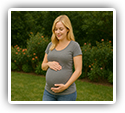
|
Turning Breech: A Natural Success Story with Chiropractic CarePregnancy is a time of incredible change — physically, emotionally, and structurally. As the body prepares to bring new life into the world, balance and alignment play a vital role in a comfortable and healthy pregnancy. One common challenge expecting mothers face is breech presentation, when a baby is positioned feet or bottom first rather than head down. This occurs in about 3–4% of pregnancies at term and often leads to recommendations for cesarean delivery. However, a recent case study published on October 6, 2025, in the Journal of Pediatric, Maternal & Family Health, Chiropractic highlights how chiropractic care focused on pelvic balance and subluxation correction can support both comfort and optimal fetal positioning.
In the report, a 32-year-old woman in her third pregnancy sought chiropractic care at 35 weeks. She was experiencing significant lower back and pelvic pain, along with hip discomfort that worsened when standing or caring for her young children. An MRI confirmed that her baby was in a frank breech position — with the baby’s legs extended upward near the face — a position that can make natural delivery difficult. Her goal was simple: to ease her discomfort and prepare her body for the best possible birth outcome.
The chiropractor performed a thorough evaluation, finding areas of tightness, tension, and limited movement in her pelvis and lower back. These imbalances, known as subluxations, can create uneven tension in the surrounding muscles and ligaments — including those that support the uterus. The patient began receiving care using the Webster Technique, a specialized approach designed to balance the pelvis, reduce nerve interference, and relieve tension in the ligaments that help stabilize the uterus. This gentle method aims to create more space and relaxation, allowing the baby to move into a natural head-down position when possible.
Over the course of 18 visits, the patient reported steady improvements in comfort, sleep, and mobility. Her pelvic pain and tightness eased, and her overall posture became more balanced. Remarkably, at 37 weeks and one day, she gave birth naturally — and her baby had turned into the ideal head-down (vertex) position prior to delivery. The birth was smooth and uncomplicated, with both mother and baby healthy and thriving after delivery.
The Webster Technique is not a “baby-turning” procedure but rather a way of restoring normal motion and alignment to the mother’s pelvis. By correcting subluxations and reducing tension, the body’s innate ability to adapt and function properly is enhanced. This balanced state can encourage optimal positioning for the baby while helping mothers experience less pain and greater ease throughout pregnancy. For many expectant women, chiropractic care becomes an empowering part of their prenatal wellness routine.
This case adds to a growing body of evidence suggesting that chiropractic care, including the Webster Technique, may play an important role in supporting healthy pregnancies and natural births. While every pregnancy is unique, this story reminds us that when the body is aligned and functioning well, both mother and baby can thrive. As more research emerges, chiropractic care continues to show promise as a gentle, effective, and natural way to promote comfort, balance, and better birth outcomes. |